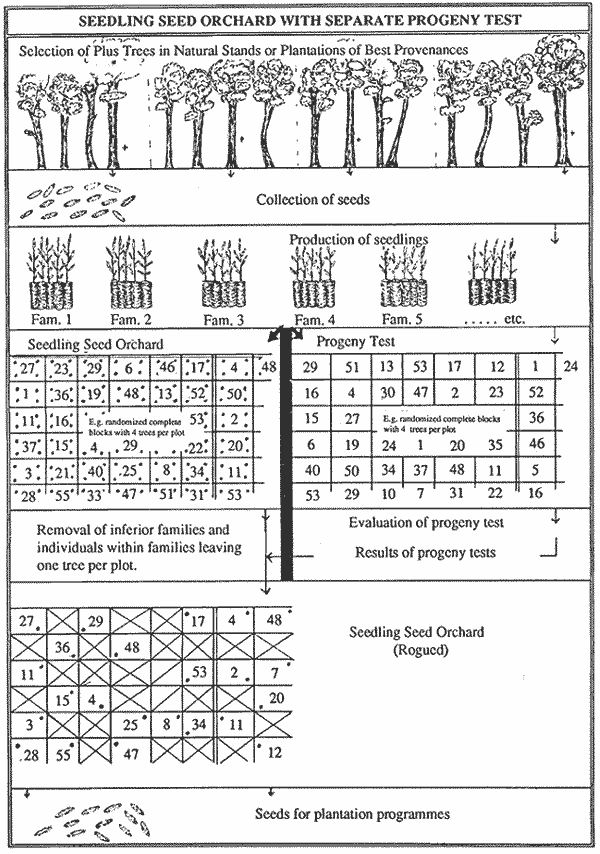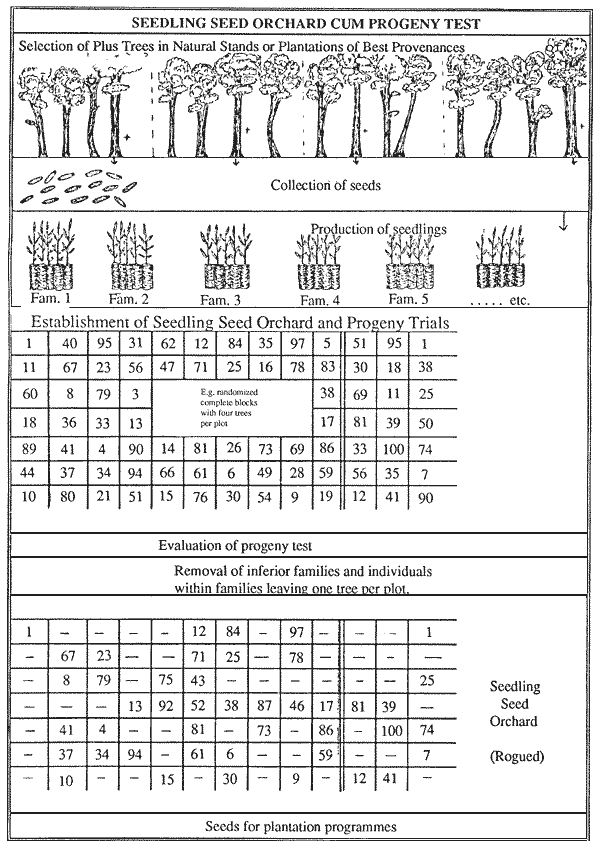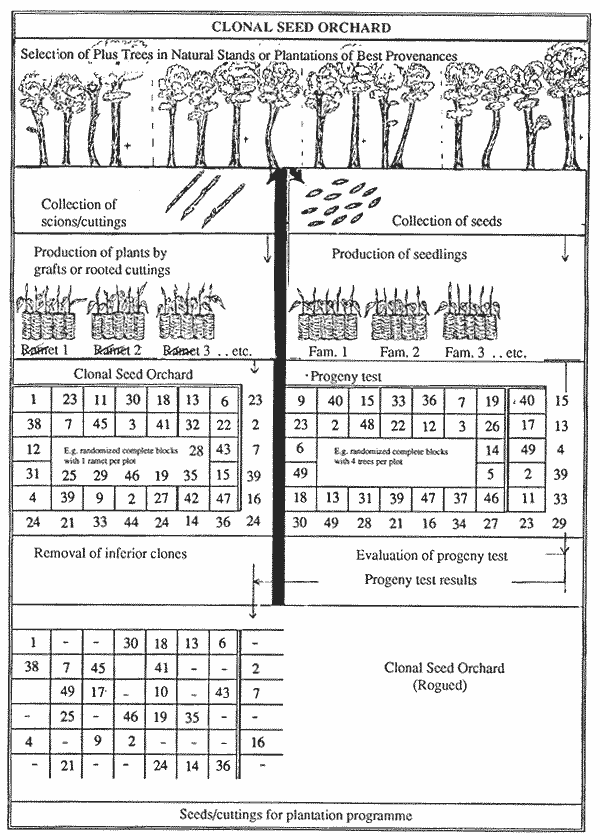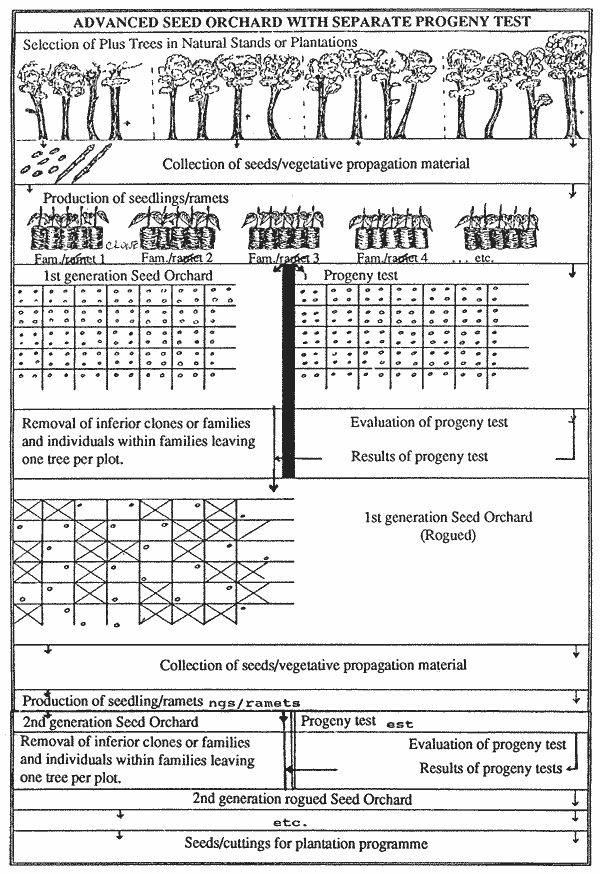Seed orchards are stands planted especially for the production of abundant superior seeds.
A seed orchard consists of trees where the phenotype is usually of minor importance as long as the trees will produce seeds. Only when the seedling seed orchard is combined with a genetic test (cum progeny trial) are the phenotypic characters of the trees important.
There are two main types of seed orchards, named according to the way of establishment:
Clonal Seed Orchard: Seed orchard raised from selected clones propagated by grafting, cutting, air-layering or tissue culture.
Seedling Seed Orchard: Seed orchard raised from seedlings produced from selected parents through natural or controlled pollination.
Which type of orchard is best in the particular situation is dependent of, e.g., species and the breeding programme. It is subject of current discussion. Some characteristics of the two types are listed below:
| Seedling Seed Orchard (SSO) | Clonal Seed Orchard (CSO) |
|---|---|
| Established from seedlings, i.e. by seed propagation from selected parents. | Established by the use of grafts, cuttings, air-layered plants, tissue culture plantlets or other methods of vegetative propagation. |
| Preferred if a genetic test can be converted into a SSO, i.e. fulfilling both the testing and seed production function at one time. | Generally preferred when vegetative propagation is possible and the seed orchard only serves as a production area for seeds and/or vegetative propagules. |
| Necessary when e.g. incompatibility between scion and stock or other constraints make vegetative propagation difficult. | |
| Broader genetic base than CSO but less selection differential. | Narrower genetic base than SSO but higher selection differential. |
| An outstanding genotype will appear only once. | An outstanding genotype will appear many times. |
| Testing is on family level. | Testing is on individual level. |
| First flowering and fruiting usually occur later than CSO. Applicable for species with early physiological flowering. | Generally first flowerings earlier than in SSO. Applicable for species with late physiological flowering. |
| Harvest of fruits/seeds generally more difficult than from CSO. | Harvest of fruits/seeds easy due to low crown branching. |
Note:
Under the circumstances where a genetic test/progeny test is converted into a seedling seed orchard, these are the following constraints in terms of locations and management:
Genetic tests are carried out in areas similar to the potential planting area of future plantation programmes. This is not necessarily conducive for flower and seed production.
Genetic tests are carried out at narrower spacing with strong competition whereas seed production requires wide spacing.



